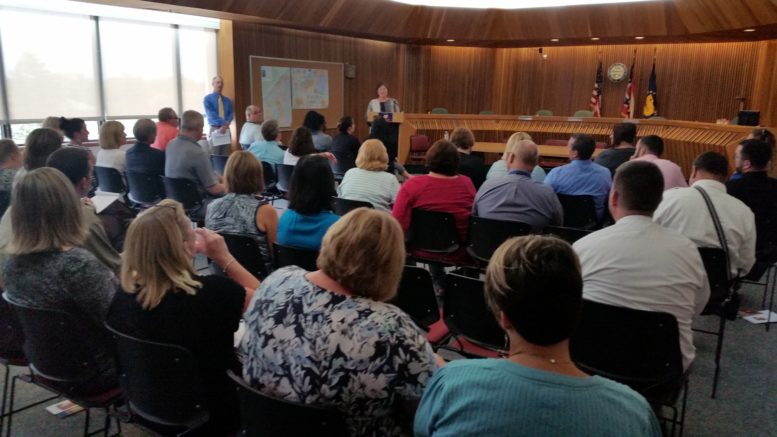By JAN LARSON McLAUGHLIN
BG Independent News
Doug Cubberley remembers the day a man came to the court probation office begging to go to jail.
“We had one young man come to our office who said, ‘If I don’t go to jail, I’m going to die.’” The man was addicted to opiates and knew it was only a matter of time till he overdosed, Cubberley said Thursday.
Probation workers in Wood County began noticing in 2014 that something was killing their clients. “They were dying at alarming rates,” said Cubberley, chief probation officer and court administrator at Bowling Green Municipal Court. So the conversation started about opiates and their growing grasp on people of all ages and backgrounds.
“We all wanted to think it was only in Cleveland or Toledo,” he said. But it was clearly here, too.
So leaders in the police, court and drug treatment professions started looking for a solution. Community meetings on the opiate epidemic were held in Bowling Green, Perrysburg and North Baltimore.
Last week, another meeting was held for court, probation, police, EMS and drug treatment professionals. This time it was to introduce “a necessary evil” in response to the opiate epidemic – Project Direct Link.
Statistics show the highest rate of accidental overdose occurs when an addict leaves jail or a treatment program, Cubberley said. “Once they are in jail, they lose tolerance to opiates.” And that often leads to deadly results.
So Project Direct Link is intended to offer opiate addicts a different course. The program gives inmates an injection of Vivitrol, a drug that helps prevent cravings and doesn’t allow them to feel the positive effects of opiates.
“People cannot get high,” said Julie Weinandy, of Renewed Mind, which has been working with a Vivitrol program in Lucas County.
The injection lasts 28 days, which gives the person a “safety net” until they are linked up with treatment programs. “It’s an awesome tool for the clients,” Weinandy said.
Inmates are the perfect clients, since Vivitrol can only be used when a person’s body is clean of opiates. Jail is the ideal “detox program,” she said. “It’s very difficult to get a client to detox at home.”
The program doesn’t stop with the injection of Vivitrol. The next steps require the client to:
- Report to the Wood County Health and Wellness Center to begin the process of reinstating Medicaid, which is halted when a person enters jail.
- Schedule and attend appointments with an agency for counseling.
- Follow all recommendations of the providers.
- Abide by all probation/parole requirements from the courts.
“This keeps them safe till we can transfer them into treatment,” Weinandy said. “It gives these inmates a chance to get help.”
Cubberley explained the program is not a “get out of jail free card.” Once released the clients must keep up with requirements. And there is a great deal of motivation for inmates to free themselves of opiate addictions.
“They will sell you the moon and stuff they don’t own to get help,” he said.
To be effective, the shots and counseling must continue for 12 to 18 months. That is too costly for the Project Direct Link budget, so it is hoped that Medicaid will pick up the expenses for most of the clients.
The project is initially being funded by money from Bowling Green and Perrysburg municipal courts, from the Wood County Alcohol, Drug Addiction and Mental Health Services Board, and an “innovation grant” from the state.
The costs include an estimated $1,000 per Vivitrol injection, plus the expense of bloodwork, and nurse and physician time.
The state grant is not renewable, so Cubberley said he wants the program to prove its worth funding by local sources.
“We have an alarming amount of overdoses,” and this program should provide relief. He spoke of the stigma surrounding opiates, and the desperation of families trying to find help. “They don’t know what to do.”
Cubberley noted that several local EMS departments are now using the drug Narcan to revive people overdosing on opiates.
Bowling Green EMS had an overdose call last week, and were able to pull the person back, Fire Chief Tom Sanderson said after the meeting. “If we get called in time, they are going to make a comeback,” he said.
So far this year, Bowling Green’s EMS has revived six overdosing patients with Narcan. The ages of those revived ranged from 18 to 40, with 24 being the average age.

